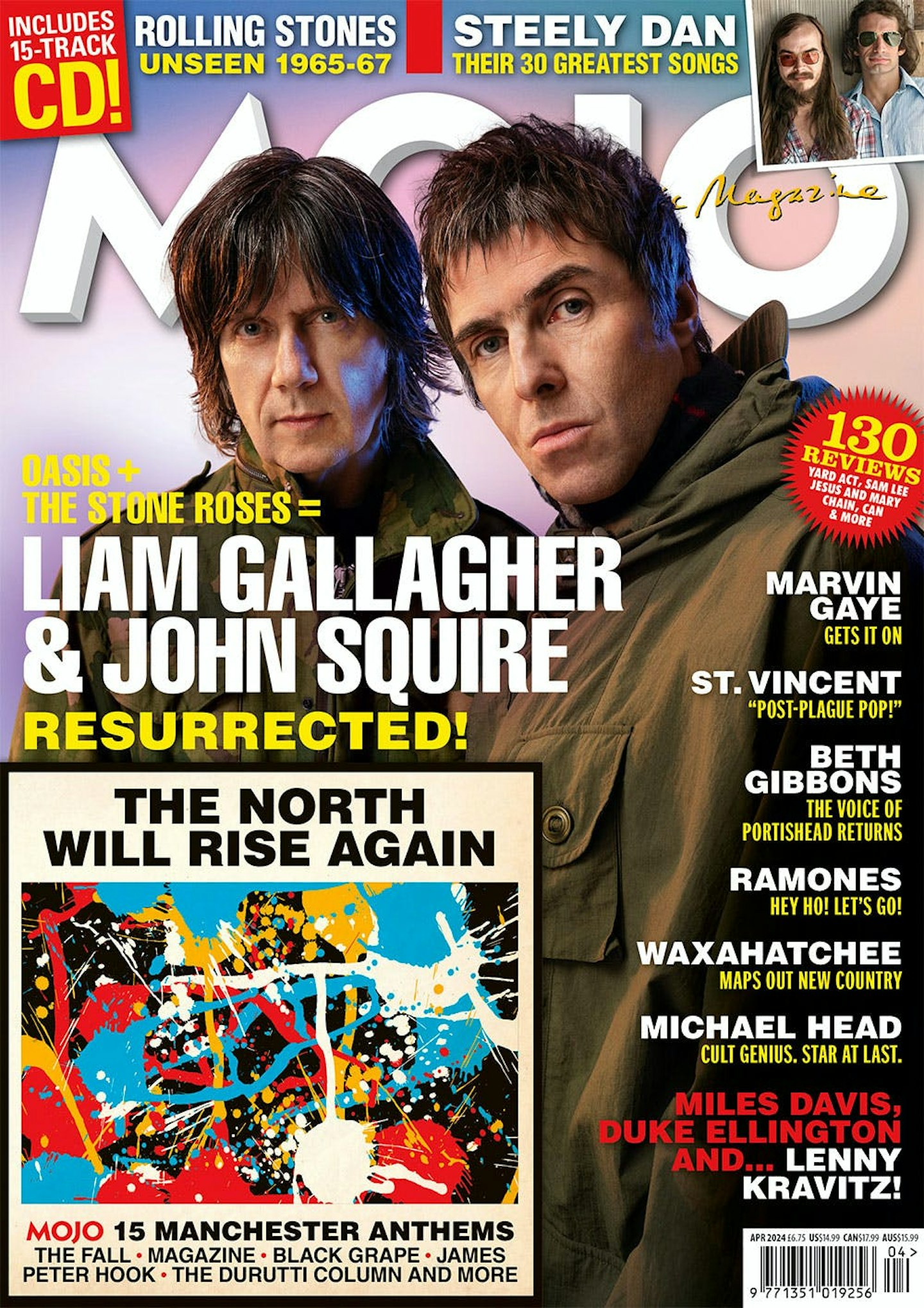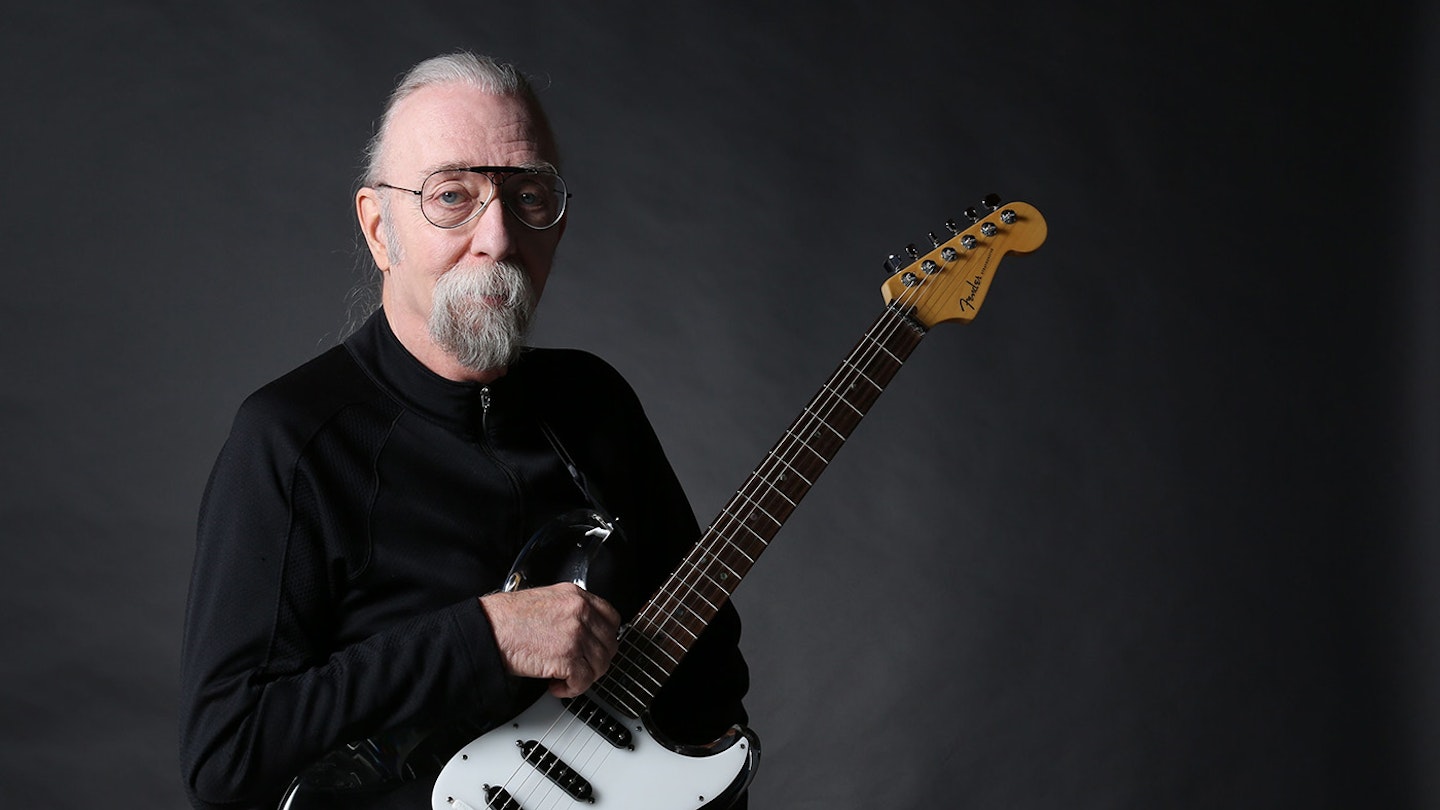THE LATEST MOJO MAGAZINE features a 10-page special celebrating the 30 Greatest Songs Of Steely Dan – not to mention the 50th anniversary of the group’s classic Pretzel Logic LP. It was a tough job whittling the group’s scintillating, sophisticated oeuvre down to so few tunes. But with contributions from MOJO’s Dan-steeped writers plus key figures in the Dan story including Larry Carlton and Michael McDonald, we hope it stimulates and satisfies as much as it inevitably stirs debate.
Missing the deadline for inclusion in the magazine through no fault of his own, Jeff “Skunk” Baxter – purveyor of riffs and licks on the game-changing first trio of Steely Dan albums: Can’t Buy A Thrill (1972), Countdown To Ecstasy (1973) and Pretzel Logic (1974) – has provided fascinating answers to ten MOJO questions about his time in the band.
Enjoy – then pick up a MOJO magazine to read our Steely Dan rundown. What’s Number 1? Any major dude will tell you…
Steely Dan are generally presented as a project steered by Donald Fagen and Walter Becker. But how did you function as a band?
It was very much a band when we first started out. Becker and Fagen were originally signed to a publishing deal at ABC Dunhill Records but the ultimate goal was to form a band, which eventually signed with ABC Records soon after.
Denny Dias said that “Walter and Donald were like one guy with two brains.” But how did they differ in terms of what they wanted from the music and their careers?
I think they were both of common mind and purpose and they saw the band as a way to present their songwriting to the public, as was a fairly common concept at the time, as many bands were self-contained and wrote and performed their own material.
There were a lot of guitarists involved in the period you were in the band: you, Denny, Elliott Randall, Dean Parks, Rick Derringer, Walter himself. Were you competitive? Did you all get on? And what unique elements did each one bring?
No real competition. Myself and Dean Parks were studio musicians and having other guitarists working with me made good sense to me.
How much say did you have in the band’s direction? Would you have preferred it to be more rock?
My main influence would have been coming up with ideas for guitar parts and executing and performing them with a high level of expertise, imagination and leveraging my experience and knowledge gained from years of working as both a studio musician and live performer. I didn’t think so much about the direction of the music, as I enjoyed the musical journey and seeing where it went. I didn’t think any of us really knew exactly what the “vision” was. Part of the experience was seeing how the music developed and hanging on for the ride!
In the touring days, the consensus was that you carried a lot of the energy on stage. Was it hard to tour with guys who just didn’t love playing shows?
I think it could be said that I was the most energetic player in the band but I also know that the idea that no one else in the band enjoyed playing live was pretty much a myth. When I watch early Steely Dan performances, it’s pretty clear that Fagen is enjoying himself.
It is said you nailed the classic guitar solo on Rikki Don’t Lose That Number in one take. How did Walter and Donald react? In general, how difficult were they to please in the studio, and how good were they at communicating what they wanted?
Yes, the solo on Rikki was one take, which was somewhat unusual for the way we approached the recording process. Becker and Fagen usually wanted to have me play the solos through a number of times, sometimes to capture specific ideas and sometimes to capture special performance moments. We did have a factor in the band we called a “gotta have it”, when someone would be firm as to keeping a particular performance. It was something that, as least while we were a band, everyone accepted and I think worked out very well.
What are your favourite Steely Dan songs and why?
Trying to pick a favourite song is like trying to pick a favourite from your own children! I think Razor Boy was a defining song as to what Steely Dan was all about, fundamentally, stylistically and musically. I do have a bit of a special liking for East St. Louis Toodle-Oo. It was a Duke Ellington song and we were all fans of the Duke. The idea was for each of us to choose one of the instruments from the orchestra and re-interpret the performance on a completely different instrument. I chose to perform the trombone part and solo on pedal steel, partially because the trombone is capable of sliding from one note to another, as is possible on pedal steel, and because it was a real challenge to learn that part and perform it.
Steely Dan songs are funny, cynical, adult – some of the first to note the failure of the idealisms of the ’50s and ’60s, or what was hollow or hypocritical about them. Did you get blowback from friends and fellow musicians who thought you were raining on their parade?
Not that I can recall. I think most people were just trying to figure out what the hell we were up to!
What is Steely Dan’s most important contribution to music?
Certainly the quality, sophistication and the cleverness of the songwriting was a major factor. Also the extremely high standard of care and perfection in the recording of the music. Roger Nichols, the engineer for the vast majority of the Steely Dan albums, was a genius and his recording acumen still stands as the benchmark, reflecting his brilliance as an engineer and his knowledge and application of cutting-edge recording technologies. Steely Dan albums have pretty much become the standard by which others try to measure the quality of their recording.
Why did you leave? Was there a main reason, or multiple reasons?
The main reason I left was that Becker and Fagen decided that they didn’t want to tour any more and I very much enjoyed playing live. I was playing with the Doobie Brothers at the time, as well as with Linda Ronstadt and a number of other bands and I wanted to continue down that road. I have always felt that the combination of performing live as well as being a studio musician offered a unique and eclectic opportunity to be a better musician and guitarist: the idea being that I could bring all that knowledge to both genres.
Click HERE for all the latest happenings in Skunkworld
Pick up the latest issue of MOJO to read MOJO's rundown of Steely Dan's 30 greatest songs, PLUS! Liam Gallagher and John Squire interviewed, The Rolling Stones unseen, Butthole Surfers, Marvin Gaye, St. Vincent, Ramones, Waxahatchee and more! More info and to order a copy HERE.

Picture: Jimmy Steinfledt
